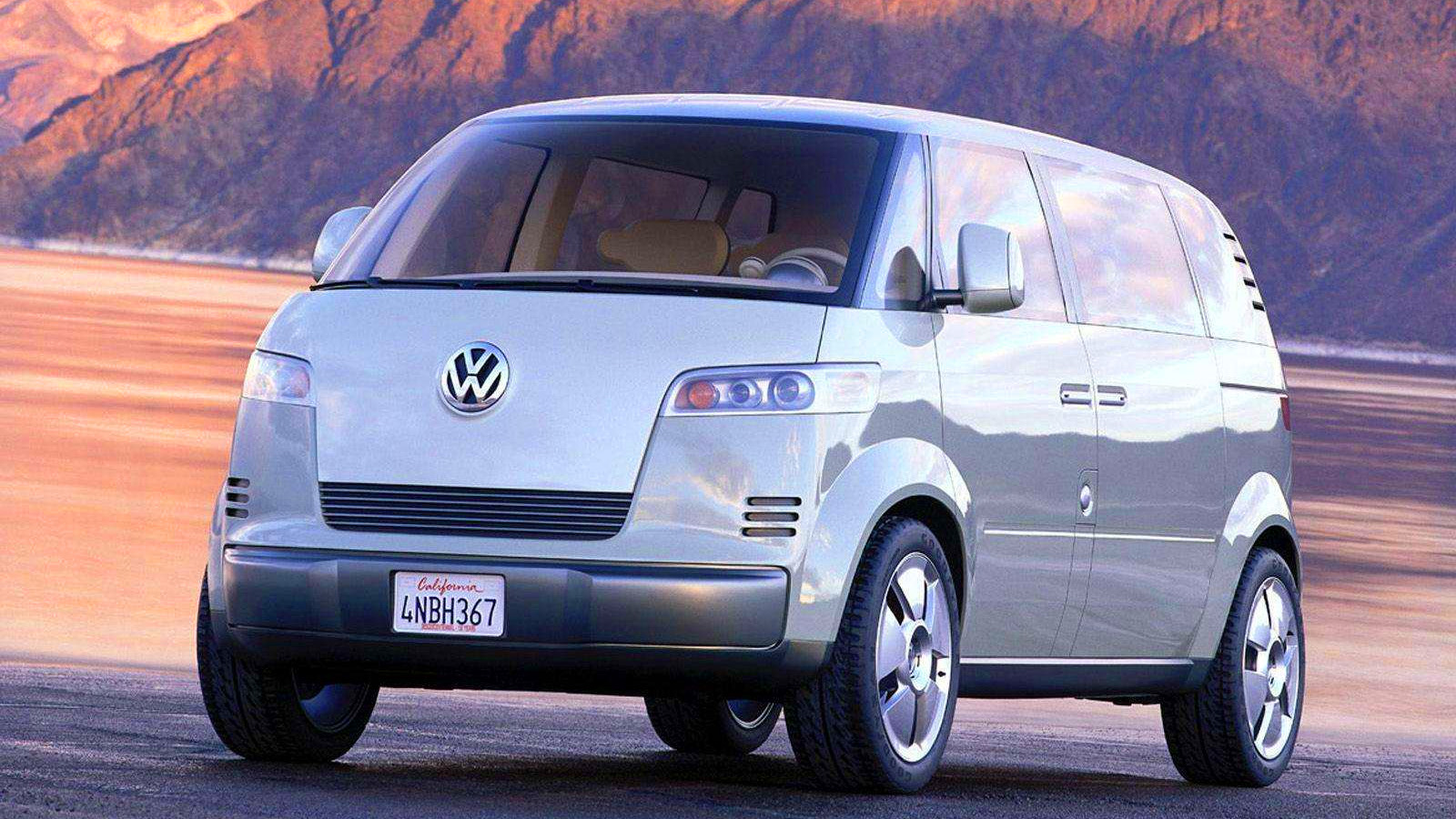
[ad_1]
Earlier this month, I was at the global reveal of the new US-spec version of the Volkswagen ID.Buzz, the reincarnated Type 2 VW Microbus. Generally, I like it, but I realize that the main reason I like it is irrational: it evokes the old air-cooled, rear-engined original bus. This vehicle works because of design. Underneath, it’s not much different than an ID.4 or any other VW MEB-platform EV. This is one of those vehicles where the styling is by far the most important aspect of it. I mean, practicality is too, but you get a lot of that for free when your design is essentially a big-ass box on wheels. I bring all of this up because I happened to see a picture of VW’s original VW Bus revival concept car from 2001 and was struck by how, well, little the design has changed over two decades to how it now appears as the ID.Buzz.

I mean, historically, there’s nobody betterat not changing a design than Volkswagen. In fact, they pretty much hold the world record for doing as little as possible to an automotive design, as seen in the Beetle, which stayed remarkably similar from when the original War of the Worlds radio hoax was first broadcast to when the War of the Worlds movie with Tom Cruise was made.

Okay, the Tom Cruise movie was 2005, but close enough.
But, we’re talking about the ID.Buzz and the 2001 Bus concept now, not Beetles. For whatever reason, VW really dragged their feet on making a new version of the Microbus, and since 2001 they’d actually had five concepts before finally landing on what would become the ID.Buzz.

After the 2001 concept, the other ones in the middle strayed in look and size and feel a great bit, mostly clinging closer to the current VW design trends of the time. But if we look at that 2001 version, especially next to the production ID.Buzz, I think it’s remarkable just how close the design came to the finished product.

I mean, it’s not exact, of course, but there are a hell of a lot of similarities there. The greenhouse, for example, with its blacked-out pillars and double A-pillar setup is essentially unchanged. The level of detail chosen, the amount of trim, a certain clean-lined design vocabulary, all these things were established in that 2001 concept and are retained in the ID.Buzz now.
The horizontal lighting signatures front and rear, too. The re-working of that frontal V-shape on the earlier bus that delineated the upper color area from the lower was flattened out at the bottom and made into a sort of hood on the 2001 concept, and that approach is retained on the ID.Buzz.

There is also the retention of a stylized version of the old engine air intakes on the D/E pillar as a stylistic quote from the original; the alignment of the wraparound taillamps and the sliding door groove. The wheelbase and overhangs are remarkably similar. It’s kind of remarkable that the hood of the 2001 concept is as minimal as the ID.Buzz, especially because unlike the electric ID.Buzz with its floor-mounted battery pack and rear motor, the 2001 concept had a 3.2-liter V6 crammed into that minimal front end, the only evidence of which was the lower grille area and three small horizontal intakes that look kind of like the modern icon for a pull-down menu.
In some ways, I kind of wish an ICE or, better, a hybrid version of the ID.Buzz was going to be available; those huge batteries are a big driver in the (estimated) high cost of the ID.Buzz – likely starting at around $60- $65,000 – so I can’t help wondering if something in the $30- $40,000 range may have been possible with a combustion version.

I suspect I keep thinking about this 2001 concept, designed by Volkswagen’s Simi Valley, California design studio, because I think it may actually be just a bit better than the ID.Buzz that reality actually provided to us. I think I actually prefer the slightly more rounded look of the sides, which expand out, a bit inflated, and I like the more prominent wheelarches and slightly more athletic stance.
Somehow, I think with a few minor alterations to some lighting and other details, this could pass as a new Bus even today, in the year of our lard 2023. Even the interior still feels remarkably up-to-date:

There’s even the start of the proliferation of LCD screens. Sure, this one is a bit thicker than modern ones, but it did fold into a table, I think, and it looks like there’s an integrated Playstation, according to that splash screen. This really doesn’t feel 20something years old, at all. How did VW nail nail this so well back in 2001, and then took so long to gestate it into what we’ll be seeing on the roads soon?

Look, they even toyed with a pop-up camper version! That looks great, though I’m a bit confused why that camper has so many rows of seats.
How many other 20 year old concept car designs have held up so well? Granted, this is a retro-inspired design, so that’s a factor, but I’m still struck by it. And, maybe a bit baffled still by why it took so long. I suppose they needed a pretty big ass-kick to get moving on something like this.
I suppose the ID.Buzz is better late than never, but I also think they didn’t need to be late, since they already had the better.

2023 VW ID.Buzz First Drive: Why This Electric Van Is So Important For Volkswagen And For EVs Overall
2023 VW ID.Buzz EV: Here Are All The Easter Eggs
Porsche Netherlands Has Reincarnated The Legendary ‘Renndienst’ Racing Support Vans Of The ’60s Using An ID.Buzz
[ad_2]